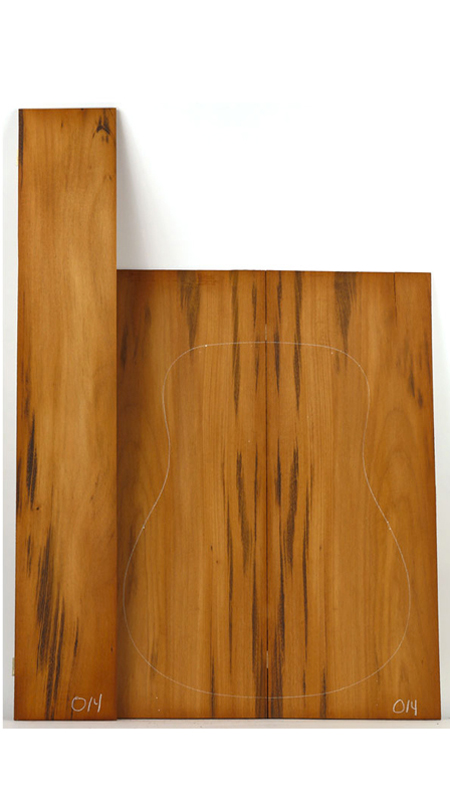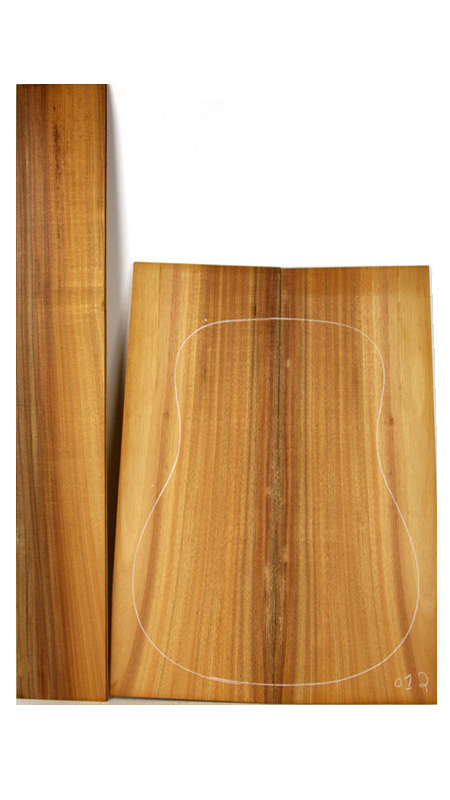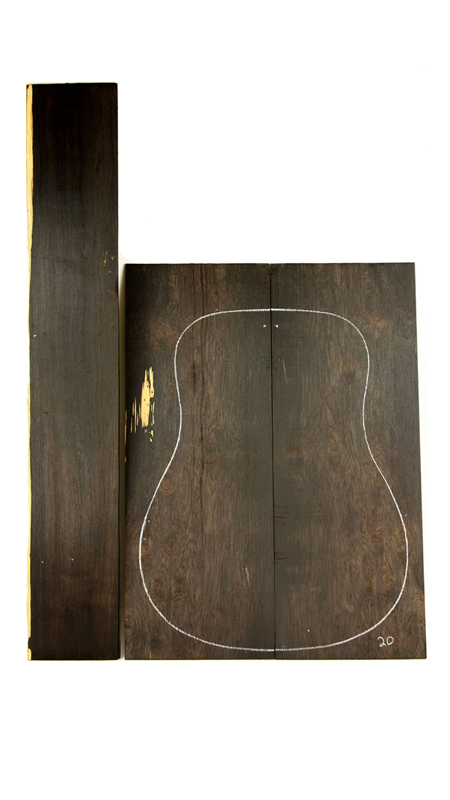Lutherie, a popular hobby, is the making of wooden, stringed, musical instruments, such as guitars, lutes or mandolins and violins. Especially in the USA the less popular similar word Luthiery is used with almost the same meanings, but mostly excluding the violin family instruments.
Wood Characteristics
- Grain: Some people refer to the annular rings as the grain. Straight grain in this case refers to the lines of the annular rings being straight and parallel to each other. ‘Fine grain’ is when the annual rings are close together or are seen as fine lines. ‘Course grain’ is farther apart or the lines are wider and more visible.
- Figure: Words like curly, quilted, bearclaw, and fiddleback all refer to different kinds of figure. Figure is genetic, is only found in a small percentage of trees, and is highly prized by furniture makers and luthiers alike.
- Color: Most woods have their basic color and then may (or may not) have other, usually darker, color bands that run parallel to the grain. In soundboards evenness of color is usually desired (though some like to see color stripes). In Cedar for example, the color bands can be very interesting. In woods like Koa, Walnut and Myrtle color bands are generally considered desirable.
- Stiffness: The soundboard serves two purposes on a guitar, one as a stable anchor for the strings, and the other as the vibrating unit with which to move air i.e. produce sound. It is this dual purpose that makes stiffness such an important quality. Too much stiffness and it will dampen the tone – too little and the top will distort. We feel that the stiffer the top, the better so the top can be made thinner to reduce weight (another tone killer).
- Winter Grain: These are the darker grain lines that define each annular ring on soundboards, and it is normally desirable if the winter grain is less apparent. In Adirondack Spruce winter grain is less avoidable and most people expect to see it.
- Medullar Rays or Silk: The closer a soundboard is to perfect quarter, the more likely the top will exhibit good silk. Silk appears as a subtle, very tight, curl-like pattern running perpendicular to the grain.
- Flame figure: Curly, fiddleback or tiger-stripe runs perpendicular to the grain and adds a three-dimensional, liquid quality to the surface of the wood especially when it is finished.
- Quilt The term used when the figure has pillowy, oval shapes. It is rarer than flame and is sometimes even more three-dimensional in appearance.
- Birdseye figure Shows an erratic arrangement of tiny, knot-like ("eye"-shaped) patterns in the wood.
- Bees-wing: Here the figure is more random, sporadic and disconnected, but can be very beautiful and intense. Commonly found in Bubinga, we sometimes have Mahogany and Narra sets with bees-wing figure.
- Spider-webbing: On some Rosewoods you will find dark lines (ink lines) that cross from one annular ring to another in a pattern very similar to a spider’s web.
- Spalting: Spalting is scale-lenghtd by a pattern of bacterial decomposition in dead wood that eventually looks like a black ink line. It is often very irregular and does not follow any other grain patterns. Wood with spalt should be handled very carefully as it often destabilizes the wood. It is a nice choice for inlay and electric guitar tops, but is not a good choice for thin acoustic guitar plates.
- Bearclaw: Also known as hazelfichte, is found in only in softwoods. Hard to describe verbally, bearclaw looks a bit like it sounds, like a bear used the tree to sharpen its claws and left small waves in the grain which may or may not be symmetrical on both sides of the top.
- Waterfall figure Likened to a very soft, broad and undefined quilt pattern. The liquidity, three dimensional texture of the wood seems full of fluid motion – like a "waterfall".
-

Tigerwood
Grain: Ament, omnimil luptur autet repres in re distio consediorum, occatem ut plaut aut fuga. Pudant moluptaque dit repelles quossit aut unt vide nobit elibus sum solupta
-

Koa
Grain: Ament, omnimil luptur autet repres in re distio consediorum, occatem ut plaut aut fuga. Pudant moluptaque dit repelles quossit aut unt vide nobit elibus sum solupta
-

Blackwood
Grain: Ament, omnimil luptur autet repres in re distio consediorum, occatem ut plaut aut fuga. Pudant moluptaque dit repelles quossit aut unt vide nobit elibus sum solupta
-

Ebony
Grain: Ament, omnimil luptur autet repres in re distio consediorum, occatem ut plaut aut fuga. Pudant moluptaque dit repelles quossit aut unt vide nobit elibus sum solupta
-

Good to Know
With some woods, the amount of figure is paramount to any other grading factor. For example, some unevenness of color in a bearclaw Sitka Spruce top gives it a 3A grade if it has outstanding bearclaw figure. A top with excellent evenness of color but weak figure may earn a 2A grade. This is true of most figured woods such as Koa, Maple, Black Acacia, and Ziricote.
-

In Progress
Body assembled, routed and ready for binding.
